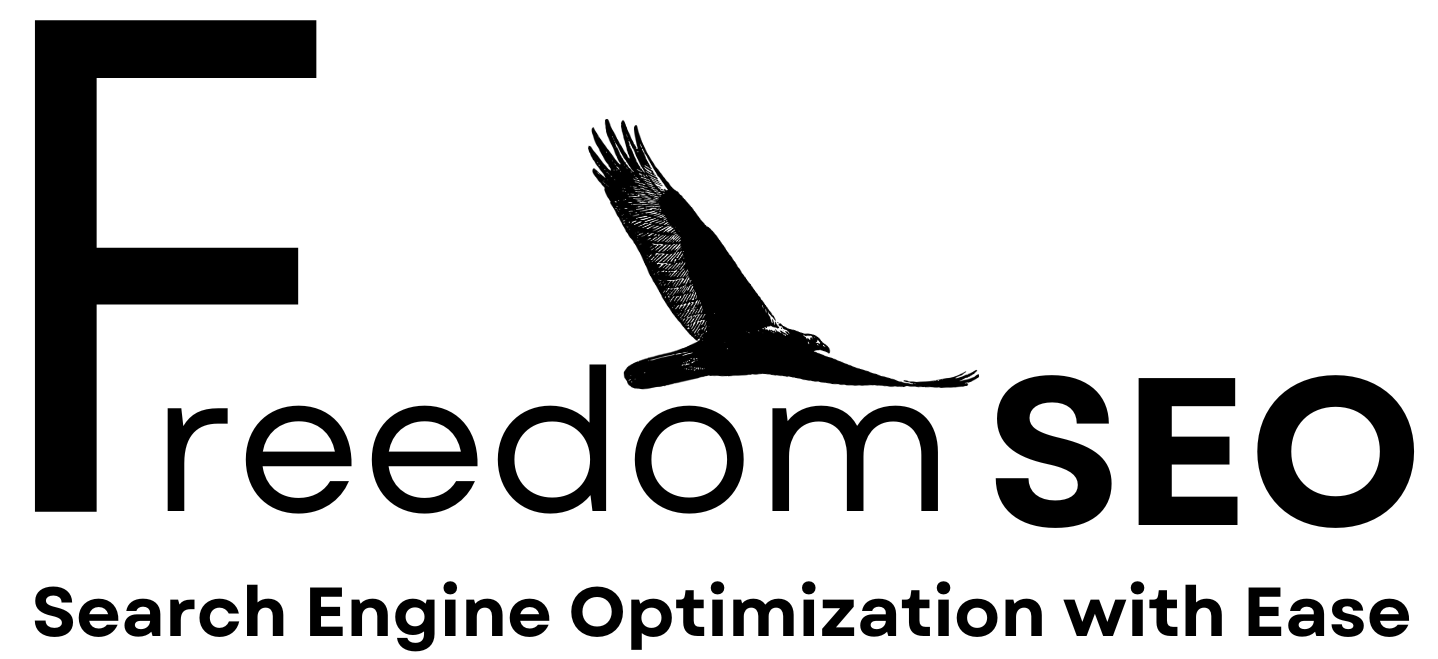Understanding www vs non www SEO: What You Need to Know

Choosing between www and non-www domains sounds simple at first. It is actually a decision that can shape your entire SEO strategy. Many people are surprised to learn that Google treats www and non-www as potentially two separate websites . This means a small detail can lead to duplicate content or split your site’s authority if handled carelessly. Most Canadian businesses focus on content and design, but the real SEO advantage often starts with this technical choice.
Table of Contents
Quick Summary
| Takeaway | Explanation |
|---|---|
| Choose one domain format | Decide whether to use www or non-www consistently across your site. |
| Implement 301 redirects | Redirect traffic from the non-preferred domain to the chosen one to avoid duplication. |
| Use canonical tags correctly | Apply canonical tags to signal your preferred domain version to search engines. |
| Monitor for consistency | Regularly audit your site to ensure all configurations support your chosen domain format. |
| Consider user experience | The selected domain format should align with audience expectations for trust and professionalism. |
What Do www and Non www Mean in SEO?
In the digital world of websites and search engine optimization, the terms “www” and “non-www” refer to two different ways of presenting your website’s domain name. Understanding these variations is crucial for maintaining a consistent and search engine friendly online presence.
Understanding Domain Naming Conventions
The prefix “www” (which stands for “World Wide Web”) has traditionally been used to indicate a website’s primary web address. For instance, in “ www.example.com ”, the “www” is a subdomain that helps direct users to the website. However, modern web practices have evolved, and many websites now operate without the “www” prefix, such as “ example.com ”.
Technical Implications for Search Engines
From an SEO perspective, search engines like Google treat “www” and “non-www” versions of a website as potentially different entities. This means if your website can be accessed through both “ www.yourdomain.com ” and “ yourdomain.com ”, search engines might interpret these as separate websites, which can lead to duplicate content issues.
According to Mozilla Developer Network , it’s critical to choose one version and consistently use it. Here are key considerations:
- Select either “www” or “non-www” as your primary domain
- Implement 301 redirects to funnel all traffic to your chosen version
- Use canonical tags to signal your preferred domain to search engines
For Canadian businesses looking to optimize their web presence, our guide on web design and SEO provides additional insights into maintaining a robust online strategy.
Ultimately, the choice between “www” and “non-www” doesn’t significantly impact SEO performance directly. What matters most is maintaining consistency and ensuring smooth, uninterrupted user experience across your chosen domain format.
To clarify the main differences and implications of www versus non-www domains, the table below compares their characteristics as discussed in the article.
| Aspect | www Domain (e.g., www.example.com ) | Non-www Domain (e.g., example.com ) |
|---|---|---|
| Role | Subdomain prefix for web services | Root domain without subdomain |
| Appearance | Traditional, often longer | Cleaner, shorter, more modern |
| Technical Considerations | May support advanced DNS setups | Simpler DNS/infrastructure |
| SEO Impact | No significant difference if consistent | No significant difference if consistent |
| User Perception | Seen as conventional or corporate | Seen as modern or minimalist |
| Consistency Requirement | Needs 301 redirects for non-www traffic | Needs 301 redirects for www traffic |
| Typical Use Cases | Large or legacy businesses, technical | Startups, modern brands |
Why Choose Between www and Non www for Your Site?
Selecting between www and non-www domains is more than a cosmetic decision. It impacts your website’s technical performance, user experience, and search engine optimization strategies. Understanding the nuanced implications can help Canadian businesses make informed digital branding choices.
Performance and User Experience Considerations
The choice between www and non-www domains affects several critical aspects of your online presence. Domain consistency plays a pivotal role in creating a professional and reliable web experience. Non-www domains often appear cleaner and more modern, while www domains can signal a more traditional web approach.
Technical Search Engine Optimization Implications
Search engines like Google pay close attention to domain structures. According to research from the University of Huddersfield , maintaining a consistent domain format helps prevent potential SEO complications such as:
- Potential duplicate content issues
- Fragmented link equity
- Reduced domain authority
- Inconsistent tracking in analytics platforms
Strategic Domain Selection Factors
When deciding between www and non-www, businesses should evaluate several strategic considerations:
- Brand perception : Which format aligns better with your company’s digital identity?
- Technical infrastructure : Some legacy systems might perform differently with specific domain configurations
- Target audience expectations : Consider what domain format your specific customer demographic finds more trustworthy
Our comprehensive web design guide offers additional insights into making these critical digital strategy decisions.
Ultimately, the most important factor is consistency . Whichever format you choose, implement proper redirects and canonical tags to ensure a unified web presence that search engines and users can easily understand and navigate.
The Impact of www vs Non www on SEO Performance
The choice between www and non-www domains can subtly influence your website’s search engine optimization performance. While seemingly minor, this decision affects multiple technical aspects of your online presence that directly impact search rankings and user experience.
Link Equity and Domain Authority
Search engines evaluate websites holistically, and domain configuration plays a crucial role in how link equity is distributed. Inconsistent domain usage can fragment your website’s perceived authority , potentially diluting the strength of inbound links. When different versions of your domain exist simultaneously, search engines might struggle to consolidate ranking signals.
Canonical Considerations and Crawl Efficiency
According to research analyzing website migrations , maintaining a consistent domain structure is essential for efficient search engine crawling. Redirecting traffic seamlessly between www and non-www versions requires strategic implementation to prevent potential ranking disruptions.
Key technical considerations include:
- Implementing 301 permanent redirects
- Configuring canonical tags consistently
- Ensuring uniform internal linking structures
- Maintaining consistent Google Search Console settings
Performance Metrics and User Perception
Beyond technical SEO implications, domain configuration influences user trust and engagement. Clean, consistent URLs signal professionalism and can subtly impact click-through rates. For Canadian businesses seeking to establish digital credibility, our website hosting guide provides additional insights into optimizing web infrastructure.
Ultimately, the most critical factor is maintaining absolute consistency . Whichever domain format you select, ensure it is implemented comprehensively across your entire web presence to maximize SEO potential and provide a seamless user experience.

How Search Engines View www vs Non www URLs
Search engines approach www and non-www URLs with sophisticated algorithms designed to understand and categorize web content. While these domain variations might seem superficial, they significantly impact how search engines crawl, index, and rank websites.
Indexing and Content Recognition
Search engines fundamentally treat www and non-www URLs as potentially separate entities . Without proper configuration, this can lead to complex indexing challenges. Google and other search engines will attempt to recognize whether these are distinct websites or variations of the same digital property, which can inadvertently create duplicate content scenarios.
Canonical URL Signals and Ranking Factors
According to Mozilla Developer Network , search engines rely on specific technical signals to understand domain preferences. These signals help determine how link equity and ranking potential are distributed across different URL versions.
Key technical signals include:
- Implementing 301 permanent redirects
- Configuring canonical link tags
- Consistent internal linking structures
- Uniform Google Search Console configuration
Algorithmic Processing and Domain Interpretation
Search engine algorithms are designed to detect and consolidate similar content across different URL formats. However, without explicit guidance, these algorithms might not always make the most optimal decisions . For Canadian businesses seeking to maximize their online visibility, our website hosting guide offers comprehensive insights into technical optimization strategies.
Ultimately, the goal is to provide search engines with clear, unambiguous signals about your preferred domain representation. Consistent technical configuration ensures that your website’s ranking potential remains concentrated and your digital presence remains strong and coherent.
Best Practices for Managing www vs Non www in SEO
Navigating the www versus non-www domain landscape requires strategic planning and technical precision. Canadian businesses must implement thoughtful techniques to ensure their website maintains optimal search engine performance and user experience.
Domain Consistency and Technical Configuration
Selecting and maintaining a single domain version is crucial for SEO success . This means decisively choosing either www or non-www and implementing comprehensive technical configurations to support that choice. Search engines prefer websites with clear, consistent URL structures that eliminate potential confusion or duplicate content challenges.

Redirect and Canonical Implementation
According to Mozilla Developer Network , effective domain management involves several critical technical steps:
- Implementing permanent 301 redirects from non-preferred to preferred domain
- Configuring canonical link tags across all website pages
- Ensuring internal links consistently use the chosen domain format
- Updating Google Search Console settings to reflect your preferred domain
Monitoring and Maintenance Strategies
Ongoing vigilance is essential in maintaining your domain’s SEO integrity. Regular audits help identify potential configuration issues that could impact search rankings. For Canadian businesses seeking comprehensive digital strategy insights, our website audit guide provides advanced techniques for maintaining optimal web performance.
Beyond technical implementation, businesses must continuously monitor their website’s performance across different browsers, devices, and search engine results pages. This proactive approach ensures that your domain configuration supports rather than hinders your broader digital marketing objectives.
The following table outlines key technical actions and their SEO purposes to help maintain a consistent and search engine friendly domain setup, as recommended throughout the article.
| Technical Action | Purpose |
|---|---|
| Implement 301 redirects | Directs all traffic to preferred domain, consolidates authority |
| Configure canonical tags | Signals preferred domain version to search engines |
| Consistent internal linking | Prevents ambiguity, strengthens domain identity |
| Update Google Search Console | Ensures monitoring and reporting match chosen domain |
| Regular SEO audits | Identifies issues with configuration or domain usage |
| DNS and server setup review | Maintains reliable and speedy access |
Ready to End Confusion Over www vs Non-www? Get Clarity and Results
Having trouble deciding between www and non-www for your website? Uncertain domain settings can create duplicate content, dilute your rankings, and confuse search engines. Consistent domain management is essential for top Google performance, but it is easy to feel overwhelmed by technical SEO details and worried about missing out on better rankings, stronger authority, or losing local customers to competitors.
Work with a Canadian team that understands your unique challenges.

Take control of your web presence and let Freedom SEO optimize your domain structure and boost your search visibility. We deliver quick, proven results for Canadian businesses. Visit Freedom SEO to learn how our managed SEO services and custom website solutions can help you show up where it counts. Now is the perfect time to make a change and ensure your business gets found by the right audience. Book your free consultation today and get started on a path to the top three on Google in your area.
Frequently Asked Questions
What is the difference between www and non-www URLs?
The difference lies in the prefix, with ‘www’ standing for ‘World Wide Web’. ‘www’ is a subdomain, while ‘non-www’ represents the root domain. Both can lead to the same website but may be treated as separate entities by search engines.
How does the choice between www and non-www impact SEO?
Choosing between www and non-www can affect your website’s SEO by potentially causing duplicate content issues and fragmentation of link equity. It’s essential to select one version and maintain consistency to optimize search engine rankings.
Should I choose www or non-www for my website?
The choice depends on your branding and technical infrastructure. Non-www domains often appear cleaner, while www domains may offer a traditional feel. Whichever you choose, consistency is key for SEO benefits.
How can I ensure proper domain structure for SEO?
To maintain proper domain structure, implement 301 redirects from the non-preferred version to the preferred version, use canonical tags on your pages, and ensure all internal links point to the selected domain format.
Recommended
















